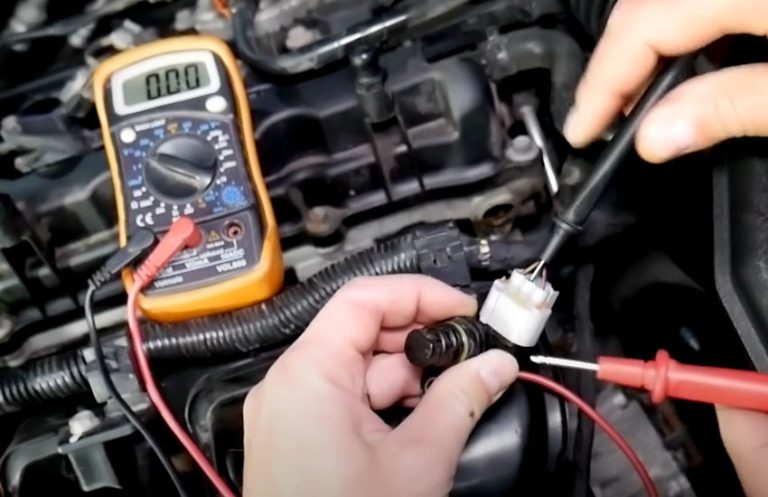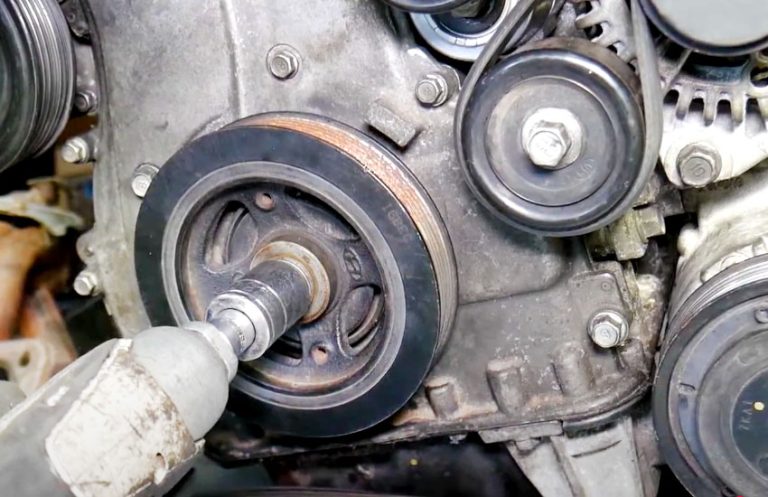Aligning timing marks on the camshaft and crankshaft is crucial for proper engine operation. Follow these steps to align the marks accurately.
When aligning timing marks on the camshaft and crankshaft, it is important to ensure the engine is at top dead center (TDC) on the compression stroke. This can typically be done by rotating the crankshaft pulley until the TDC mark lines up with the pointer on the timing cover.
Then, align the timing marks on the camshaft with the timing mark on the crankshaft using a timing belt or chain. It is recommended to consult the vehicle’s service manual for specific instructions as the alignment process can vary between different engine types.

Understanding Cam And Crankshaft Timing Marks
Understanding Cam and Crankshaft Timing Marks is crucial for the proper functioning of an engine. The timing marks on the cam and crankshaft help ensure that the engine’s valves and pistons are in sync, allowing for efficient combustion and optimum engine performance. In this section, we will dive into the concept of cam and crankshaft timing marks and their significance in aligning the engine’s components.
What Are Cam And Crankshaft Timing Marks?
Cam and crankshaft timing marks are reference points that indicate the specific positions of the camshaft and crankshaft about the engine’s timing. These marks are typically located on the gears or pulleys of the camshaft and crankshaft, and they help in aligning the components during the timing adjustment process.
Importance Of Aligning Timing Marks
Aligning the timing marks on the cam and crankshaft is essential for ensuring the precise timing of the engine’s valves and pistons. Proper alignment prevents the risk of valve-to-piston interference, which can cause severe damage to the engine. Additionally, correct timing mark alignment contributes to optimal engine performance, fuel efficiency, and reduced emissions.
Tools Required For Aligning Timing Marks
Common Tools
When it comes to aligning the timing marks on your engine, some commonly available tools can come in handy. These tools, although basic, are essential for a successful alignment process. Here are some of the common tools:
- An adjustable wrench, which allows you to loosen or tighten bolts with the necessary torque.
- A socket wrench set, which provides a variety of socket sizes to fit different bolts and nuts.
- A torque wrench, which ensures that you apply the right amount of force when tightening bolts.
- A feeler gauge, used to measure the gap between two components, ensuring the correct alignment.
- Combination wrenches, which consist of both open-end and box-end wrenches for versatility.
- A rubber mallet, which can be used to gently tap components into place during the alignment process.
Specialized Tools For Precision Alignment
For those seeking utmost precision in aligning timing marks, specialized tools are available to help achieve accurate alignment. These tools are designed to simplify the process and ensure precise positioning of the camshaft and crankshaft timing marks. Here are some specialized tools:
- A timing light, which utilizes a strobe light to visually indicate the position of the timing marks.
- A crankshaft turning tool, designed to rotate the crankshaft precisely while aligning its timing marks.
- A camshaft locking tool, used to secure the camshaft in the correct position, preventing undesired movement.
- A timing belt tensioner tool, which aids in properly tensioning the timing belt once the timing marks are aligned.
- A mirror alignment tool, which allows you to view the hidden timing marks through the use of a mirror.
With the combination of common tools and specialized tools, you can confidently align the timing marks on your engine, ensuring its smooth operation and longevity. While common tools provide the foundation for the alignment process, specialized tools add a layer of precision that can make a significant difference in achieving optimal timing synchronization.
Step-by-step Guide To Align Timing Marks
Aligning timing marks is crucial when it comes to maintaining the proper functioning of your engine. These marks ensure that the camshaft and crankshaft are synchronized, allowing for smooth and efficient operation. In this step-by-step guide, we will walk you through the process of identifying and aligning the timing marks on your cam and crankshaft.
Identifying Timing Marks
Before we can align the timing marks, it is essential to identify where they are located. These marks can differ depending on the engine make and model, so consulting the manufacturer’s manual is the best way to locate them accurately.
Typically, you will find the timing marks on the camshaft gear and the crankshaft pulley. The camshaft gear will have a mark, often indicated by an arrow or a dot, while the crankshaft pulley will have numbers or TDC (Top Dead Center) markings.
If you are unable to locate the timing marks in your engine manual, you can perform a quick search online using your engine specifications. There are often forums and websites dedicated to specific engine models and provide detailed information on where to find the timing marks.
Aligning Cam And Crankshaft Timing Marks
Once you have identified the timing marks, it’s time to align them. This process ensures that the camshaft and crankshaft are in the correct position to work together effectively. Follow these steps:
- Rotate the crankshaft in the direction of its normal rotation until the timing mark on the crankshaft pulley aligns with the TDC mark or the specified number on the engine.
- Next, locate the timing mark on the camshaft gear and rotate the camshaft until the mark is aligned with the corresponding mark on the cylinder head or engine block.
- Check if all timing marks are aligned precisely. If not, double-check your work and make necessary adjustments.
- Once the timing marks are aligned correctly, you can proceed to reassemble any components you may have removed during the process, such as the timing belt or chain.
It is essential to follow the specific guidelines provided by the manufacturer for your engine model, as the alignment process may vary slightly. Taking your time to ensure the timing marks are properly aligned will prevent engine damage and ensure optimal performance.
Common Mistakes To Avoid
Aligning timing marks on cam and crankshafts is crucial to avoid engine damage. Common mistakes to avoid include rushing the process and not double-checking the alignment. Take your time and follow the manufacturer’s instructions carefully to ensure precise alignment for optimal engine performance.
Forcing Alignment
One of the most common mistakes that people make when attempting to align the timing marks on the cam and crankshaft is forcing the alignment. It may seem tempting to apply excessive pressure or use tools to forcibly align the marks, but this can lead to serious consequences. Forcing alignment can damage the components involved, such as the timing belt or chain, leading to costly repairs or even engine failure.
It’s important to remember that the timing marks are designed to align naturally when the engine is in its correct position. Instead of forcing the alignment, taking a patient and methodical approach will yield better results and preserve the integrity of the engine.
Misinterpreting Timing Marks
Misinterpreting the timing marks is another common mistake that can occur during the alignment process. The timing marks are typically represented by specific symbols or indicators on the camshaft and crankshaft gears or sprockets. These marks may be in the form of notches, dots, or lines, and it is crucial to understand their placement and alignment requirements.
Incorrectly interpreting the timing marks can lead to improper alignment, which can affect engine performance and cause various issues, such as erratic idling, decreased power, or even engine misfires. To avoid this mistake, consult the manufacturer’s manual or reliable sources that provide accurate information on the specific timing marks for your engine model.
Additionally, double-checking the alignment by rotating the engine by hand after aligning the marks can help ensure they are in the correct position. This step is crucial to confirm proper alignment before starting the engine.
Importance Of Properly Aligned Timing Marks
Impact On Engine Performance
Properly aligned timing marks play a crucial role in ensuring optimal engine performance. When the camshaft and crankshaft are not in sync, it can lead to a variety of issues that can negatively impact the engine’s smooth operation.
First and foremost, incorrect timing alignment can result in a lack of power. This is because the combustion process relies on the precise timing of the valves and pistons. If the timing marks are not aligned correctly, the valves may open or close at the wrong time, affecting the engine’s ability to breathe properly and produce adequate power.
Furthermore, misaligned timing marks can cause engine misfires and rough idling. If the valves and pistons are not properly synchronized, it can disrupt the combustion process, leading to misfires and a rough running engine. This can result in poor fuel efficiency and a decrease in overall performance.
Preventing Costly Damage
Proper alignment of timing marks is not just essential for engine performance, but also for preventing costly damage. If the timing marks are misaligned, there is a risk of the valves striking the pistons. This is known as a “valve interference” or “engine timing belt failure” situation.
When the valves and pistons collide, it can cause significant damage to the engine, such as bent valves, damaged pistons, or even a cracked cylinder head. The repair costs associated with fixing these issues can be quite high, especially if the damage is severe.
By taking the time to properly align the timing marks on the cam and crankshaft, you can prevent expensive repairs and avoid the inconvenience of a broken-down engine. Regular maintenance that includes checking and adjusting the timing marks can help extend the lifespan of your engine and save you from unnecessary expenses in the long run.
Conclusion
To conclude, aligning the timing marks on the cam and crankshaft is a crucial step in ensuring the proper functioning of an engine. By following the steps mentioned in this blog post, you can effectively align these marks and maintain the engine’s optimal performance.
Remember the importance of accuracy, patience, and double-checking during the process. Practice and experience will make this task easier over time. Keep your engine running smoothly with aligned timing marks!


